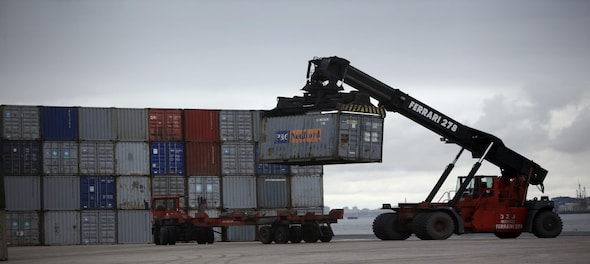
Micro, small and medium enterprises (MSMEs), accounting for about 40 percent of India’s exports, is expected to face headwinds from the imminent economic slowdown in advanced countries, particularly the US and Eurozone as these two geographies account for a large chunk of India’s overall exports- nearly one-third.
Resultantly, one out of five MSMEs are expected to see a stretch in its working capital days. These MSMEs are in sectors already grappling with high working capital requirements.
The Ahmedabad cluster has a major presence of MSMEs into dyes and pigments, pesticides, and pharmaceuticals. The working capital stretch is expected due to an inventory pile-up following dumping by Chinese producers, the recent earthquake in Turkey and a slowdown in the US. These three account for 20-25 percent of the total exports of dyes and pigments, pesticides and pharmaceuticals, according to an analysis by CRISIL MI&A Research.
90 percent of India’s diamond exports emanate from Surat. Diamonds constitute more than half of India’s gems and jewellery exports and a substantial decline in demand from the US, the largest export market, is having a significant impact. That, in turn, is having a bearing on receivable days, leading to an increase in working capital days from about 140 prior to the pandemic to more than 200 this fiscal.
In the construction-roads sector, underachievement of budgeted capex last fiscal — to rein in fiscal deficit — has added to the challenges of developers in meeting working capital demand amid high commodity prices. This has led to an increase of more than 100 days in their working capital cycle this fiscal, compared with pre-pandemic levels.
Furthermore, the total debt requirement for the MSME sector is estimated at about Rs 100 lakh crore. However, not all of tis demand is addressable by the formal financial institutions, as some firms are either not commercially viable or voluntarily exclude themselves from formal financial services. The challenges to accessing capital include high credit risk, lack of collateral, regulatory barriers, etc. Hence with about 70 percent debt sourced from informal sources, the cost of capital is extremely high.
According to the RBI, about 80 percent of India's MSME sector debt is in the high risk category and the non performing assets have increased substantially, which indicates a significant credit gap in the MSME sector hampering its growth and development.
Although, there has been progress in providing access to capital to MSMEs with the new initiatives like priority sector lending norms, cluster-based lending and government schemes. Albeit there is a need for more enabling policies and infrastructure to support the MSME sector and its financing needs.
Check out our in-depth Market Coverage, Business News & get real-time Stock Market Updates on CNBC-TV18. Also, Watch our channels CNBC-TV18, CNBC Awaaz and CNBC Bajar Live on-the-go!


Lok Sabha Election 2024: Phase 5 voting concludes with over 57% voter turnout, experts weigh in on key battles
May 20, 2024 11:07 PM
BJP holds meeting in Delhi as polling underway for 5th phase
May 20, 2024 4:21 PM
UP Police arrests man after viral videos shows him voting multiple times
May 20, 2024 2:18 PM

